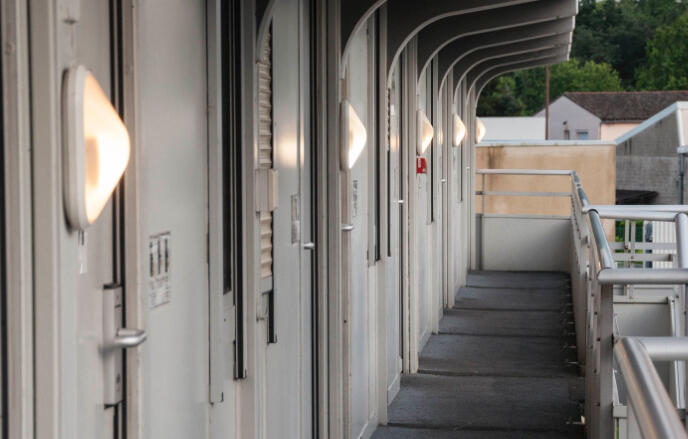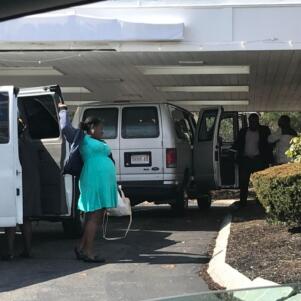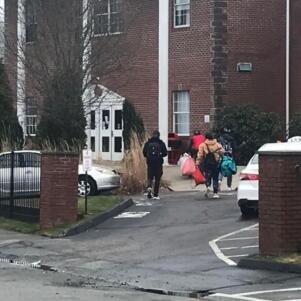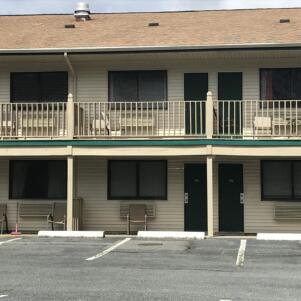Family Shelter Placements Have More Than Doubled In Massachusetts Under Maura Healey
By State House News Service | December 8, 2023, 16:03 EST


By Sam Drysdale
State House News Service
While lawmakers on Beacon Hill have deliberated over sending aid to the state’s emergency assistance system, the number of families that are finding safe housing in those shelters has grown by 105 percent in the last eleven months, according to data recently acquired by State House News Service.
On January 4, 203, the first day of the two-year legislative session, there were 3,676 families in emergency assistance shelter, records from the Massachusetts Executive Office of Housing and Livable Communities show. That number stood at 7,531 as of Wednesday, December 6, with an additional 174 families on a waiting list Governor Maura Healey created.
The spike in the number of families entering the system has occurred almost entirely during Healey’s administration, which began January 5, 2023. The increase has been steady this year, but picked up in the second half of 2023. More families came into the system in the four months between August and December than in the first seven months of the year.
The record-breaking number of enrollees also far surpasses the previous high in available data — 4,825 families were sheltered in the system in October 2014.
In the fall of 2014, 2,971 families were placed in traditional shelters and 1,854 were housed in hotels and motels. As that peak declined over the next several years, the state shifted away from placing families in hotels, the data show.
By 2021, from month to month no more than 10 families at a time were living in motels and hotels through the emergency assistance shelter system.
However, as the state began to be inundated with new arrivals into the system late last year — largely fueled by migrants, refugees, and asylum seekers fleeing humanitarian crises in other countries — the number of families staying in hotels and motels has exploded.
Over the past year, the number of families living in hotels and motels grew by more than 1,000 percent.
It began taking off last fall, shortly after Massachusetts made headlines nationwide when Florida Governor Ron DeSantis flew 48 unsuspecting migrants to Martha’s Vineyard on September 14, 2022.
The 45 families living in hotels and motels through the emergency assistance shelter system in September 2022 more than doubled to 124 by October 2022. This is around the time then-Governor Charlie Baker began calling attention to the issue, claiming the emergency assistance system was on a path to run out of room and money.
By January 2023, there were 303 families living in motels and hotels. Eleven months later — as of Wednesday, December 6, 2023 — the last day of available data — that number was up to 3,656 families.
As Baker was preparing to leave office, his administration predicted in December 2022 that the emergency assistance shelter system would burn through available funding and no longer be able to guarantee spots for eligible families by late March 2023. Massachusetts House Ways and Means Committee chairman Aaron Michlewitz responded by saying the governor’s prediction seemed “like a very arbitrary number.”
“You go back to the previous 90 days, and there was never a discussion about this before that point in time,” Michlewitz said in December 2022. In the 90 days he referred to, the number of families in shelter had grown by about 570, according to the data State House News Service obtained.
Fast forward a year, and the Ways and Means chairman just finished negotiating one of the most contentious bills of the session so far, which will inject $250 million into the shelter system that in the last year has overflowed with homeless families and is on pace to burn through its $325 million annual appropriation well before the end of the fiscal year.
Democrats approved a supplemental budget on Monday, December 4 that pours more money into the shelter system and school districts that have had to take in children without a permanent home halfway through the school year. It is the second emergency injection of funds they’ve sent to the shelters in 2023 — after a supplemental budget this spring spent $85 million to expand the capacity of the emergency assistance shelter system.
“Currently, around 30-40 families arrive each day in Massachusetts seeking temporary housing, but only 15-20 families exit the emergency shelter system on a daily basis. The discrepancy in these numbers has crippled the Commonwealth’s ability to house and feed both migrant and unhoused families in need,” members of the state’s congressional delegation wrote in a letter to the U.S. Secretary of Homeland Security, Alejandro Mayorkas, and the administrator of the Federal Emergency Management Agency, Deanne Caswell, on Wednesday, December 6, asking for an increase in federal aid.
As the system has more than doubled in size over less than a year, almost all growth has been through using “overflow” hotel and motel rooms.
The number of families living in “traditional shelters” has only grown by about 300, according to the data from the state Executive Officer of Housing and Livable Communities. These are the official emergency assistance shelter units staffed by contracted homeless service providers.
On January 3, 2023, when the total number of enrolled families was 3,676, the vast majority — 3,373 — of those families were in traditional shelters. As the total number of families grew to 7,543 by the beginning of December 2023, the amount in traditional shelters stayed fairly flat, at 3,653.
System administrators also appear to be shifting families from hotels and motels into traditional shelter.
Between Tuesday, December 5 and Wednesday, December 6 earlier this week, only six new families were admitted into the emergency assistance shelter system. However, the number of families in traditional shelters went up by 165, about the same amount as those who left hotel housing.
So-called “temporary emergency shelters” were used for the first time on July 19, when 62 families were sent to these “short-term shelters that provide a path for families that are medically complex, do not have benefits, or need assistance navigating system.”
Temporary shelter capacity peaked on August 7, with 117 families. This was the day before Healey declared a state of emergency concerning the shelter crisis. The number of families began to decrease again on October 16 — the same day Healey announced the state would no longer guarantee shelter for all eligible families.
As of Wednesday, December 6, there were 57 families in this short-term housing.
Since the state implemented Healey’s capacity limit on November 9, the number of families placed on a waitlist to stand by for an open space in the shelter system has steadily increased.
The state Executive Office of Housing and Livable Communities does not publicly share this data on its emergency assistance shelter system dashboard, but when asked, a spokesman for the office has shared updates on how many families are on the waitlist.
On November 13 — four days after the system hit the cap of 7,500 — 22 families were waiting for a spot. By November 20, that number was up to 102. Most recently, the Executive Office of Housing and Livable Communities spokesman said on Tuesday, December 5 that 174 families were standing by for a call.
In the meantime, these families have been encouraged to go to community organizations for help, and some overflow beds have been made available through the United Way of Massachusetts and at the Massachusetts Department of Transportation building in Boston. Reports have emerged of people sleeping in cars, in churches, and at Logan International Airport in East Boston.
Asked Thursday, December 7 on WBUR’s Radio Boston to respond to reports that some families have been sleeping outdoors, Healey responded that her administration has “made every effort to house people” and that she wasn’t “aware of the specifics there.”
Healey said the number of people coming into the state is going down.
“I think the numbers coming into Logan have really dropped significantly. I don’t know what that’s about entirely. Some of it, I think, has to do with the weather. We’ve had families who have been staying and housed in Florida and in Virginia who left to come here, some of whom have now returned,” the governor said.
The data on the state Executive Office of Housing and Livable Communities dashboard does not include information about exits from the emergency assistance shelter system, but the total number of families enrolled has stayed near Healey’s cap of 7,500 since it went into effect on November 9. Meanwhile, the waitlist is growing.
Lawmakers argued for months that they were not getting enough information from the governor’s administration about the emergency assistance system. In the bill they passed Monday, December 4 that included the $250 million infusion, legislators also included requirements that Healey’s housing and finance secretaries provide comprehensive and frequent reports on the status of the families staying in the state’s shelters.
Massachusetts House Ways and Means Committee spokesman Blake Webber said Thursday, December 7 that the language in the law “doesn’t speak to making [the reports] publicly available” and that “typically it’s not the practice of the committee to make such reports public unless required to.”
The Massachusetts Senate voted against making the reports publicly available online during its debate last month on the underlying supplemental budget bill.










